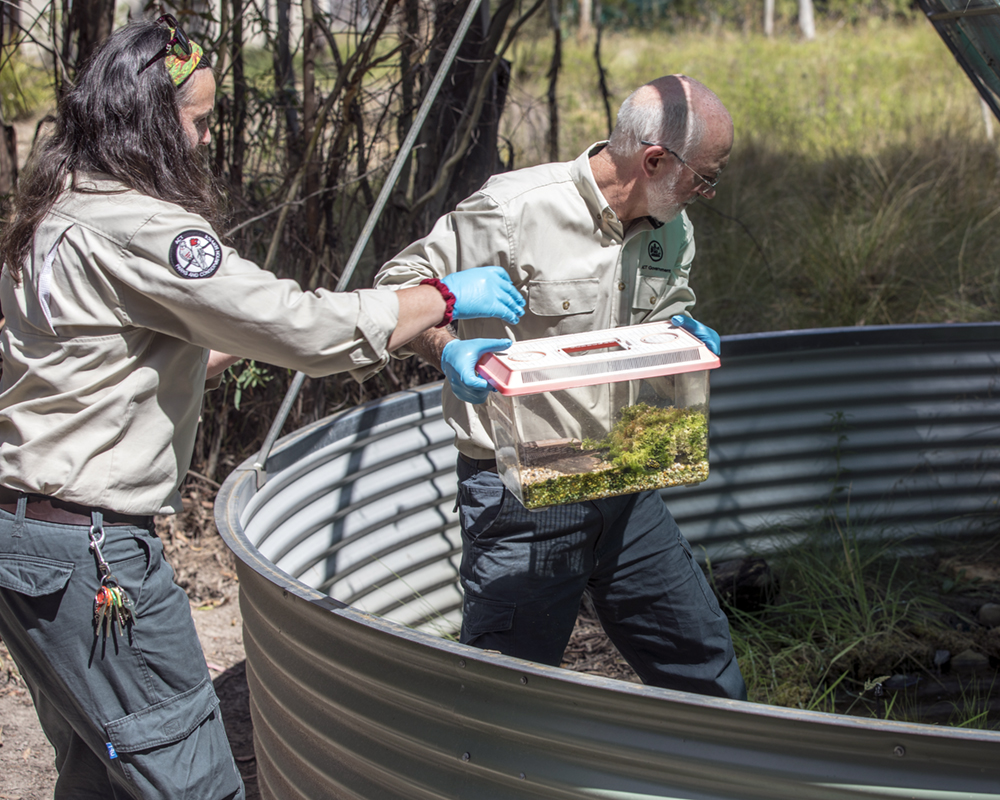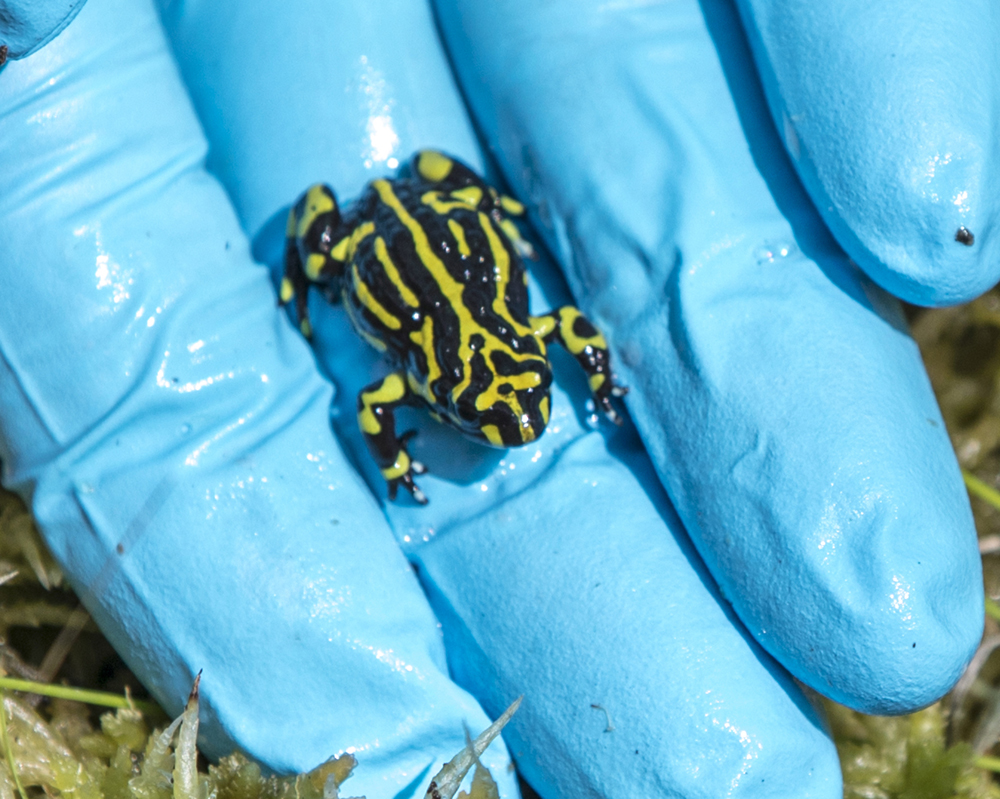
New territory for threatened frog
Monday, 19 February 2018Australia’s threatened Northern Corroboree Frog is set to benefit from new breeding techniques and a new approach to identifying wild reintroduction sites.
The ACT Government leads Australia’s main captive breeding program for the tiny black and yellow frogs at Tidbinbilla Nature Reserve, accounting for 90%
of the captive population.
Senior Ecologist Dr Murray Evans from the ACT Government, is overseeing the release of 30 frogs into new semi-wild enclosures at Tidbinbilla this month.

Northern Corroboree Frog released. Image: Peter Taylor TSR Hub

“Traditional frog captive breeding programs are resource intensive, usually using climate controlled conditions, and programs can be limited by space as
well as resources,” said Dr Evans.
“Our new semi-wild enclosures will provide the frogs with more natural conditions and space, and will also allow more frogs to be bred and raised.
“One of the main objectives of the program is to breed frogs which can be released back into the wild, to boost wild populations that have declined due
to the amphibian disease chytrid fungus, so being able to breed more frogs is a great advantage,” said Dr Evans.
Past releases have been into areas that were prime Corroboree Frog habitat in Namadgi National Park, but overcoming threats in the wild, such as chytrid
fungus, is proving challenging to re-establishing wild populations.
A new research collaboration between the ACT Government and the Threatened Species Recovery Hub of the Australian Government’s National Environmental Science
Program will ensure that the frogs bred at Tidbinbilla have the best chance of establishing healthy wild populations.
Lead Researcher Dr Ben Scheele from the Australian National University is working to identify potential new release sites that will give the frogs an advantage
in the wild.
“We are moving beyond focusing just on habitat and environmental conditions that suit Northern Corroboree Frogs,” said Dr Scheele, “including finding areas
that are most unfavourable to chytrid fungus, and that have few other frog species to act as carriers of the disease.
“We are also investigating other aspects that can give the corroboree frogs an advantage and allow wild populations to better tolerate the impacts of chytrid
fungus; one of these factors is better understanding how long frogs take to reach sexual maturity.
“Although the frogs are found high up in the mountains of Namadgi, we think warmer temperatures at lower sites could give the frogs a helping hand by enabling
them to grow faster and breed sooner.
“We will survey lower elevation areas in Namadgi National Park with the aim of identifying potential new habitat for introductions of corroboree frogs.
“The overall objective is to ensure that the frogs bred at Tidbinbilla have the best chance of surviving and breeding in the wild to establish healthy
wild populations,” said Dr Scheele.
This work builds on the ACT Government’s corroboree frog recovery program, and is supported by Australian Government funding through the National Landcare
Program and National Environmental Science Program.
For media enquiries contact
Geoff Virtue, ACT Government, Communications Officer, 0401 766 218, geoff.virtue@act.gov.au
Jaana Dielenberg, TSR Hub, Science Communication Manager, 0413 585 709 j.dielenberg@uq.edu.au
Top image: Murry Evans and Jenny Pierson deliver the frogs to the new tank. Image: Peter Taylor TSR Hub